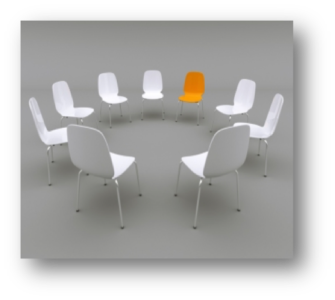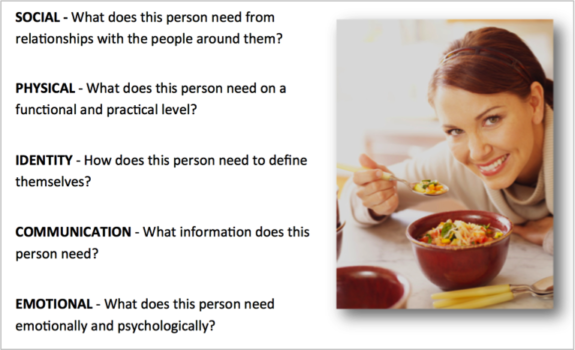Increasingly, we are all coming to the realization that using historical methods is not working to generate new possibilities in this era of disruption.
We hear our client partners when they say “we want new approaches or techniques to solve our business challenges.”
We have found Design Thinking an effective approach that has had successful results for our client partners.
Design Thinking, simply put, is a “human centered” methodology or approach to innovation. And here’s how we would suggest you use it:
The approach starts with really understanding your business through the consumers’ lens. It is important to see beyond the product or service you are providing and explore what they mean in the deeper context of the consumers lives. By doing this you will uncover unmet needs which will help you generate new possibilities.
Exercise 1 – Talk to the Consumer
Whether that is an online bulletin board, focus group or One on One interviews, ask the person to share pictures and tell stories about the relevant area of exploration. Assign a couple of members of your team to capture insights about the consumer on POST IT notes.

Exercise 2 – Mine for Insights
The interviewer should then share insights with the wider team, who will in turn build on the insights. With many POST IT notes in hand, the team should cluster related areas to try to find emerging patterns. Each cluster is then given a name. The cluster with name should point the team to a specific need or area of opportunity.
Exercise 3 – Develop a Persona
Using the related themes from the insight mining, create a profile of the consumer. Using the S.P.I.C.E. framework you will be focusing on the broader needs of the person at a human level. This will help you create a solution that is relevant and more meaningful. Articulate the needs across the five areas.

Exercise 4 – Generate Ideas
Now is the point in time where your team should explore new possibilities. Using the S.P.I.C.E framework, one need at a time, generate as many possible ideas as you can. Cluster your ideas into related areas and summarize the cluster with a title. As a team pick one big idea and articulate the idea with more detail.

Exercise 5 – Design an Experience
Once you have the BIG IDEA, map out how your consumer will discover, learn and interact with the new concept. This helps you bring the new concept to life and allows you to address unmet needs, see potential gaps and amplify the aspects of the experience that could be stronger.
More specifically:
- Create a timeline on a large piece of paper
- Plot the stages of the experience along the timeline
- Build out the experience (the P.O.E.M’s framework is a great tool to use)
- Visualize the experience and create a story

Exercise 6 – Co-Creation & Iteration
Now is the time to bring your concept to life. As a team, build a prototype (can just be a drawing or pictures etc) that brings the concept granularity. Bring back some consumers and share the idea with them to gain feedback. Communicate your idea by telling them a story. Ask consumers what is working and what is not? What could be better? Refine the idea based on the feedback. Now you have an idea that you can move forward into execution.
By leveraging these key elements of Business Design, you will be well on your way to solve your toughest business challenges.
Reference: Rotman Executive Program, Business Design.




